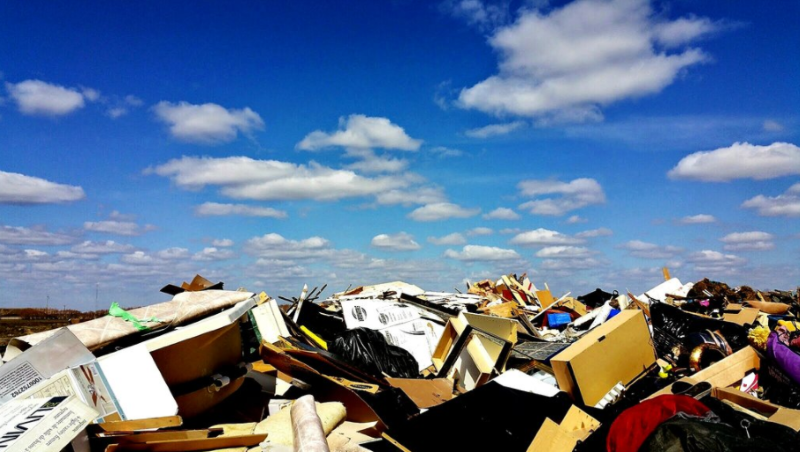
Megatrend Spotlight: Earlier this year, 3M shared the megatrends we see shaping the next 5-10 years of life on this planet. To understand the source of these trends, and their impact around the globe, we are taking a deeper dive into their key themes and the ways our people, technology and solutions are working to improve lives.
The global economy’s linear business model depletes natural resources faster than they can be replenished and puts strain on the natural environment. As we transition to a more sustainable world, it’s important to advance circular business models which reimagine waste from one process as raw materials for another. Despite advances in waste management and recycling processes, recent events like bans on waste imports, record low oil prices, and the global pandemic have brought about new challenges.
Across the globe, attitudes and awareness around waste are shifting—creating strong momentum to address these challenges. Consumers are more educated on waste management and their demand for more sustainable solutions has increased. Businesses see an opportunity to innovate, building new ways of working and new technologies to address waste challenges. Innovation in materials, manufacturing processes, and closing the loop at the end of a product’s useful life can lead to the development of new solutions. This allows more items to be repurposed, recycled, or reused at end-of-life. This is not about one company changing one product, but a system that requires governments, consumers, and all organizations to do their part to make a difference.
At 3M, our Strategic Sustainability Framework sets forth three priority areas that guide our business decisions and strategies, including a Science for Circular pillar. With this pillar, it is our ambition to design solutions that do more with less material, advancing a global circular economy. One way we create this change is by requiring that every new product since 2019 identify a Sustainability Value Commitment, describing how it can drive impact for the greater good. We also work to optimize manufacturing processes and reduce waste in our operations. In order to drive impact on an even broader scale, we partner with suppliers, customers, and like-minded organizations.

Sustainability Value Commitments help transform our product offerings. For example, 3M™ Health Care Service Centers extend the life of hardware and reduce unnecessary waste. Consumer solutions made with 100% recycled content, like Scotch-Brite™ Sponges and 3M™ Thinsulate™ 100% Recycled Featherless Insulation, advance circularity by repurposing materials. Sometimes, extending the life of materials is the best way to reduce impact. As an innovation that gives new life to outdated fixtures, 3M™ DI-NOC™ Architectural Finishes are films that refurbish surfaces and keep them in use for longer.
As a company with manufacturing sites all around the world, 3M strives to build circularity into our operations. Our circular economy working groups are accelerating the use of recycled and renewable raw materials in products and packaging. When possible, 3M reduces, recovers, reuses, and recycles byproducts and other surplus material. In 2015, 3M established a goal to reduce manufacturing waste by an additional 10% (indexed to net sales) by 2025. This built on work 3M had been doing for decades—including an overall waste reduction of 32.9% since 2005. Another 2025 Sustainability Goal for 3M is to divert waste from landfills and achieve zero landfill status at more than 30% of its global manufacturing facilities. As of 2019, 3M has reduced waste by 12.6% (indexed to net sales), and 35.4% of 3M manufacturing sites no longer send waste to landfills.
By expanding 3M’s waste reduction efforts beyond our value chain, we are amplifying positive impact. We actively collaborate with our own technical community, channel partners, and community leaders to improve waste management. In 2019, 3M became a member of the Ellen MacArthur Foundation to collaborate with others to help drive greater impact for the circular economy. In 2020, we invested in The Recycling Partnership’s Recycling Inclusion Fund to advance recycling infrastructure and education, and research the challenges that prevent a more equitable recycling system. 3M also continued support of Closed Loop Partners, enabling projects like the U.S. and Canada Recycling Infrastructure and Plastic Waste Map—a first-of-its-kind public tool highlighting and tracking the diversity of plastic waste as well as opportunities to recapture valuable plastics and re-incorporate them into the manufacturing supply chain.
“Like many areas in sustainability, reducing waste is a collaborative effort,” said Gayle Schueller, 3M Vice President and Chief Sustainability Officer. “By continuing the work to reduce waste in our own operations, developing solutions that help our customers meet their sustainability goals, and partnering with others to advance progress in our communities, we can work to create less waste and fuel a global circular economy.”
To learn more about the shift toward The Waste Reduction Imperative, a key theme under the Changing Climates and Resources Megatrend, click here.
